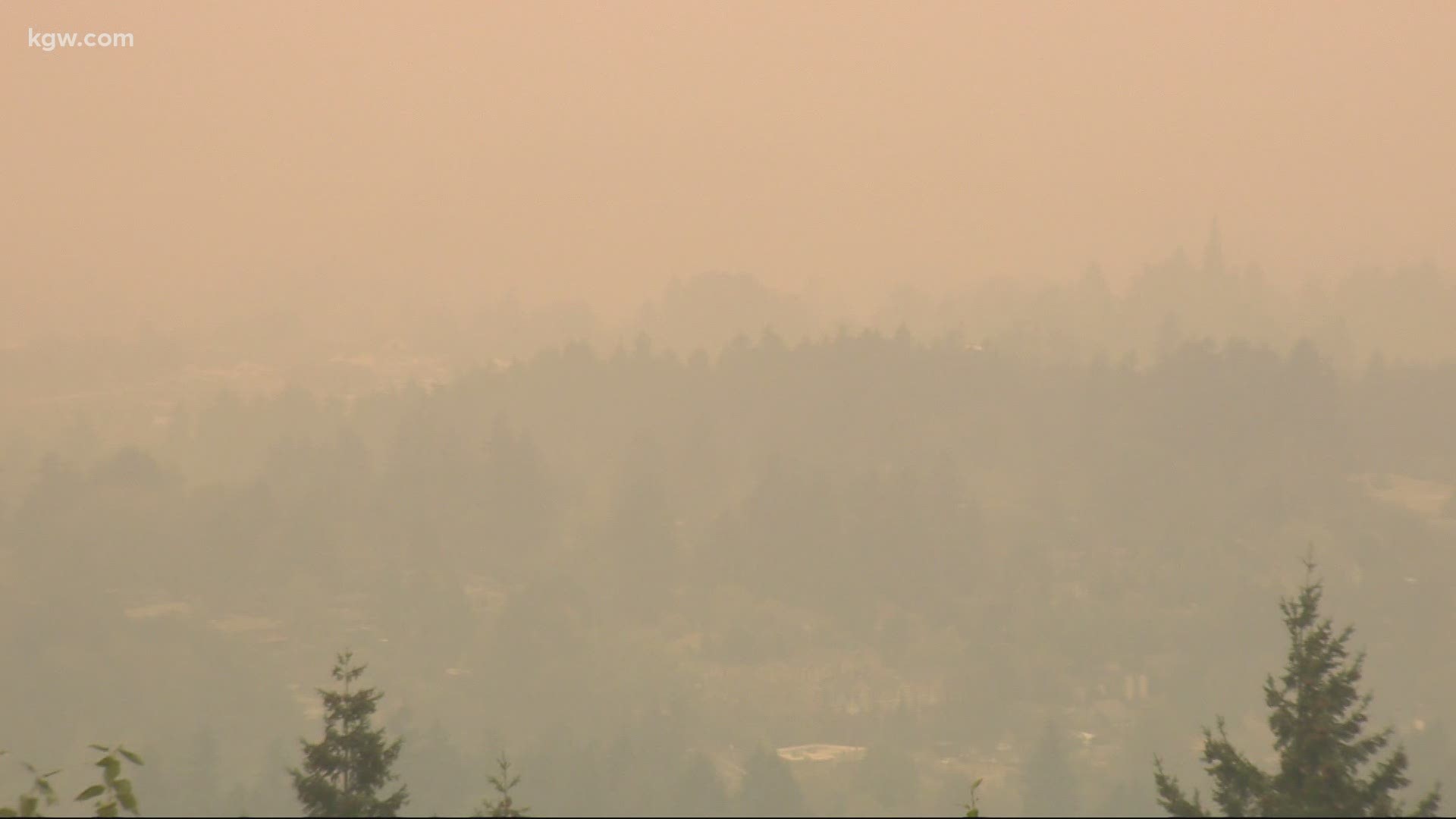PORTLAND, Ore. — Days upon days of unhealthy air quality across the Pacific Northwest are taking a toll.
Oregon hospitals and clinics are seeing more people with breathing issues, and health experts with the American Lung Association say families need to take extra precaution with children.
“This smoke has just been surreal, right?" Lake Oswego mother of two Bev Stewart said. "It's just hit us on so many levels that I thought I was prepared. But I'm not, really.”
As hazardous, smoky air blankets the region, moms like her are feeling the effects in themselves and their kids.
“Last night my daughter, who is 9, says, ‘My throat still hurts. When is it going to stop?’ And I said, 'Baby, I don't know. Hopefully tomorrow it'll be better,'” Stewart said.
Stewart has a unique perspective: She works for the American Lung Association and has an underlying lung condition, which makes her at a greater risk of complications as wildfire smoke continues to fill the air.
“People call and they ask me, ‘Are you OK?’ They know that I have a lung disease and so they know that I’m more affected by wildfire smoke than some other populations,” Stewart said. “And I always say, 'I'm OK.' But not really, because I think that's how we all are feeling.”
Even though she’s been able to work from home and stay indoors, her eyes itch and burn, her throat is sore and her voice is raspy.
“A little bit of chest pain and shortness of breath,” she said. "And I'm on two respiratory medications that I haven't been on in years."
She's following the advice of experts and the American Lung Association by staying indoors with the windows and doors shut. She is doing what she can to keep the air inside as clean as possible.
That's the plan at Fruit and Flower Child Development Center in Portland. They've kept kids in their care inside since Thursday.
“Quickly, once that air index hits that 'unhealthy for sensitive groups,' everybody is pulled in off the playground and the rest of their day in care is spent inside their classroom,” said operations director Naomi Chavira.
The pandemic adds another layer of concern to the wildfire smoke impact. But Chavira said it’s made her staff even more flexible, a necessity when wrangling 2-year-olds.
“Teachers are quite adept at changing plans for preschoolers because not everything goes as you think it's going to go anyways,” she said.
Kids can't get outside, but they still need to get that energy out, which might be even more important with the added stress everyone is feeling right now.
“With the importance of that physical movement for young kids, that ability to get those wiggles out, teachers move tables, they push shelves aside, they bring bikes inside, and the kids are scooting around on the little scooter boards,” Chavira said.
Health experts say people need to take extra precautions when it comes to kids. Their lungs are still developing and are more susceptible to smoke.
“A lot of the same symptoms: chest tightness, sleepiness. And then with smaller children, if they're not wanting to eat, if they're really sleepy, unresponsive, that's an emergency and you should seek help,” pulmonologist with Kaiser Permanente Northwest Dr. Joshua Filner said.
For the parents out there doing all they can to manage the wildfire impact, a pandemic, and a movement to end systemic racism, Chavira has some advice.
“Just make sure we're keeping a close eye on kiddos, even when they're sleeping,” she said. “And be patient with yourself. As parents everybody has had to adapt. Add a little bit of screen time to keep your sanity and recognize that nobody is judging you right now.”
KGW on YouTube: Wildfire coverage

